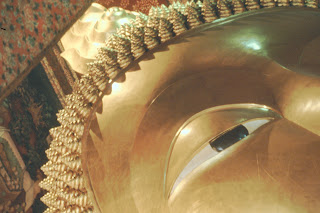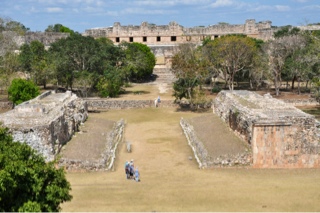I’m
jumping ahead of myself by taking you up the long, steep ascent to Namche before
telling you the story of how I got to Nepal in the first place. That climb to the trading town was an aspiration or a symbol of the whole trek, of its challenges
and of its accomplishments. So I want to take you back to January 2002 when my
long-time friend, Wendy, phoned from Ottawa to ask if I’d go to Everest Base
Camp with her.
Honestly,
at the time, the idea seemed nutty -- frivolous. The Himalaya? Base Camp?
Nepal? I couldn’t imagine why anyone did that kind of far out stuff. Actually,
the thought frightened me too. The cold, the mountains, the six weeks away from
home, the expense, my age -- could I do something so strenuous at almost 65,
the altitude (We’ve all read stories of people dying en route to Base Camp.) I
couldn’t think of even one reason why I’d want to travel there.
So
I said to Wendy,” I’ll think about it.” And she waited. She phoned again. I
talked with Bob. Then a couple of weeks, sensing my hesitation, Wendy, who was
working at Alcatel’s Paris headquarters and accumulating a lot of airline
points, offered to give me enough points for a first class return ticket to
Bangkok. Her generous offer changed my whole perspective because Bob agreed to
help with the financial part too. Finally, I saw an amazing opportunity to
understand a part of the world I knew next to nothing about.
More
honesty here. Six years ago I signed up for a post graduate creative writing
course through Humber College. My mentor, Canadian writer and musician, Paul
Quarrington, helped me write the first six chapters of Finding Nepal. I dipped back into other adventures that had given
me the courage to consider Nepal. I described the training and finally the
trek.
Because
I used the journey from Lukla to Everest Base Camp as the structure, that is I
followed the literal journey, I got bogged down with the book. It became
predictable. It lacked tension and grip. During the period of writing, Coach Q
prodded me to write more about myself, to add more flesh to the bones. So the
book had also started to become an exploration of my hidden life, the part of
me I didn’t want talk about, the part I hadn’t signed up for! He wanted me to
be authentic. Real. Honest. Heck.
I
was a reluctant horse that wanted to stay in the barn and hide. The book became
a real gremlin that I had to put into a box under lock and key. Now here I am
with you these six years later ready to open the box. I have no idea where I’m
going with the story. But I know you are patient. I promise myself and you that
I will see this journey through.
I’m
including a photo of the eye of the Reclining Buddha taken in Thailand before
the trek. I had this photo with me in 2006 while writing. In fact I wrote at
night in hotel rooms after a six hour day of flying in CFUXY while en route to
B.C., after having earned my Radio Operator’s License and Student Pilot Permit.
The experiences were intense. I have the photo in front of me now. It
represented(s) for me the story of the Golden Buddha. Here is that story.
................................................
More
than three hundred years ago, the Burmese army planned an attack on Thailand or
Siam as it was called then. The Siamese monks at the time worshipped a golden
Buddha shrine. It weighed two and a half tons. It was pure gold.
To
protect it from the invading Burmese army, the monks covered the Golden Buddha
with twelve inches of clay knowing that the warriors would think it worthless.
But the Thai monks were slaughtered in the invasion and so the Golden Buddha
remained a secret.
In
1957, a group of Tibetan monks were told that a new highway was being built in
the area of the clay statue, that it would have to be moved. Later, during the
lifting operation the shrine began to crack. It was much heavier than the monks
and the engineers had expected. So, it was lowered onto the ground and covered
with tarps for protection against an impending storm.
However,
during a night time flashlight inspection, a glint caught the head monk’s eye.
He found a chisel and hammer and began to chip away at a crack. As it widened,
he was shocked to see the gold. By lantern, all the monks worked at the Buddha
and eventually stood in awe at the miracle in front of them.
................................................
For
many and for me, the Golden Buddha represents the hidden self, the parts of us
we chose to hide, our untold tales. In my blog stories, you’ll find photos of
Kathmandu’s sacred power places, indescribable mountains, Hindu and Buddhist
statues (While the Sherpa people of the Everest region follow Tibetan Buddhism,
Nepal is mostly Hindu.), terraced rice fields in vivid shades of green and you’ll
see the people that so amazed me with their happiness despite poverty. I’m glad
you are on the journey with me.



















































